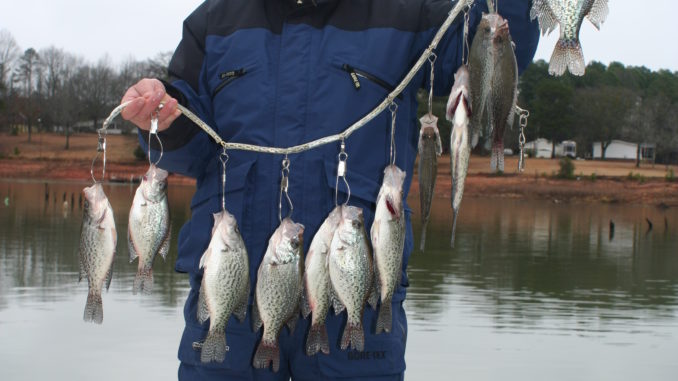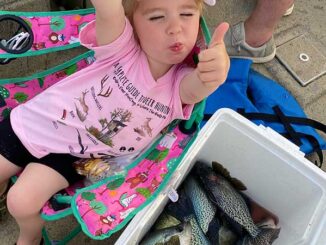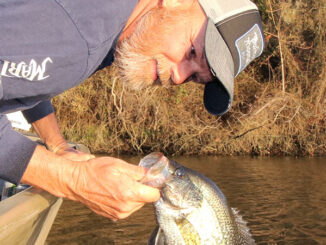
Fish tiny jigs on light line in dark places for winter slabs
When winter sets in and water temperatures drop below 48 degrees in South Carolina’s Lake Hartwell, stripers, hybrids and black bass pretty much shut down, with a few exceptions. When that happens, according to guide Preston Harden of Commerce, Ga., it’s time to shift gears and go crappie fishing.
“Crappie seem to bite no matter how cold it gets,” Harden said.
Finding structure with shade is key for winter crappie, so the best fishing on sunny days will be under docks and bridges. On overcast days, you will find fish concentrated more around deep brush piles in 20 to 25 feet of water. They move in on the docks and deep brush piles in January as they begin to stage for the spawning migration back into the creeks, Harden said.
“They really like to congregate in the shade,” said Harden (706- 255-5622). I don’t get out on other people’s docks, but I will get right up against a dock to try to get a little jig into the darkest part I can get it to. It’s mostly vertical jigging, but you can also do a little bow-and-arrow cast or underhand toss to get it to where you think is the best spot.”
And while crappie will readily bite in winter, they are not aggressive feeders, so it is a delicate bite, and you need finesse tackle — and a feel for the ultra-subtle — to be successful, he said.
“You will get more hits on 4-pound line than 6-pound,” Harden said. “I don’t use 2-pound, but some crappie fishermen do. I prefer a 1/32-ounce jig, and if I want it a little heavier, I will do a tandem jig rig, tying one on the end and another about 1½ feet up. Sometimes you catch two at a time doing this, but I do it more to stay in (places) where I am feeling it better.”
Harden also prefers monofilament over flourocarbon for vertical jigging because it lies on the surface longer while coiling down 20 to 30 feet.
“I watch the line, and if something stops it, I set the hook,” he said. “It is very delicate fishing, very sensitive.”
Once the jig is down to the desired depth, Harden begins reeling it back up — extremely slowly.
“I am just barely reeling, just enough to make my rod tip quiver. And if I know what depth the crappie are holding I sometimes won’t reel at all, just hold the jig at that depth and make the rod quiver. Every time I twitch the rod, I can feel that jig. If something feels different, or if I don’t feel the jig all of a sudden, I know the fish has it.”
Even if the weather is very cold, crappie fishing this time of year is worth braving the elements, Harden said.
“In my opinion, crappie are the best-eating fish in the Southeast — second only to walleye — and they really taste so much better coming out of that cold water,” he said.




Be the first to comment